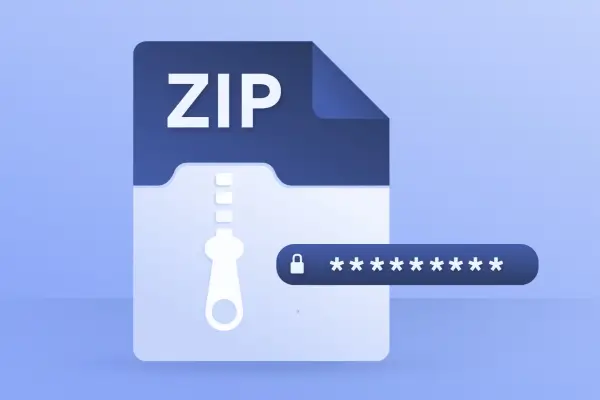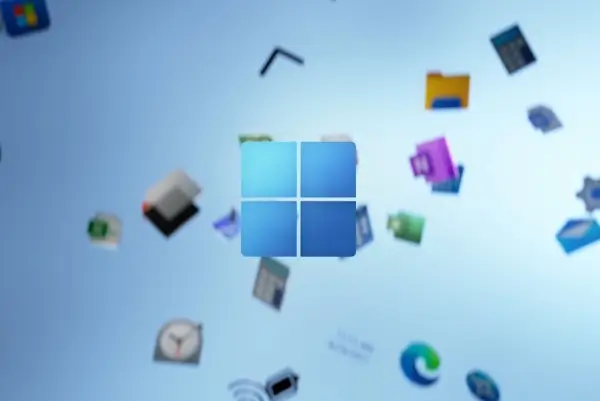Question : “Skipping all tests because server is not responding to directory service requests
I have a server that was hit by a virus a couple weeks ago. I also believe in the past a previous master server has just been turned off with no roles transferred. I am uncertain of this however.
After the virus attack though, some people were complaining that they could not log into the domain. I went and checked it out and found that when I pinged the server from itself it was pinging the 169.254.x.x. I finally reloaded drivers and disabled the secondary nic card that is not used. However, I found this weird that I had to do this.
I have heard reports all week that at this site the server is slow, and there is no real rhyme or reason for this. I was also I finally got time to check on the server and did a dcdiag test on it and found some interesting errors. This is the output of my dcdiag test:
Domain Controller Diagnosis
Performing initial setup:
Done gathering initial info.
Doing initial required tests
Testing server: Default-First-Site-NameWGJH_SERVER
Starting test: Connectivity
WGJH_SERVER’s server GUID DNS name could not be resolved to an
IP address. Check the DNS server, DHCP, server name, etc
Although the Guid DNS name
(e7f7f862-bdd1-4141-89f7-009a6c97c94b._msdcs.wgjh)
couldn’t be resolved, the server name
(wgjh_server.wgjh.gree.k12.wv.us) resolved to the IP address
(10.93.96.7) and was pingable. Check that the IP address is
registered correctly with the DNS server.
……………………. WGJH_SERVER failed test Connectivity
Doing primary tests
Testing server: Default-First-Site-NameWGJH_SERVER
Skipping all tests, because server WGJH_SERVER is
not responding to directory service requests
Running enterprise tests on : wgjh
Starting test: Intersite
……………………. wgjh passed test Intersite
Starting test: FsmoCheck
……………………. wgjh passed test FsmoCheck
I also checked the event viewer and found some weird errors hitting certain computers trying to attach to the domain. It should also be noted that when the server was pinging itself using that 169.254.x.x I had to seize all roles.
Event Type: Error
Event Source: NETLOGON
Event Category: None
Event ID: 5722
Date: 12/22/2006
Time: 1:08:04 PM
User: N/A
Computer: WGJH_SERVER
Description:
The session setup from the computer ROOM109-25 failed to authenticate. The name of the account referenced in the security database is ROOM109-25$. The following error occurred:
Access is denied.
Data:
0000: 22 00 00 c0 “..À
I appreciate any insight. I will be the first to admit I am not a server expert.
Thanks,
Solution : “Skipping all tests because server is not responding to directory service requests
I think that you need to check the DNS first since that seems to be an issue.
You may also have damaged the AD and possible other files and info.
Do you have a system State backup before the virus attacks ?
Some of the Tools listed below may help diagnose and repair your issues.
Many of the following tools were included in previous Windows Resource Kits, but are now part of the Windows 2000 Support Tools, located on the Windows 2000 operating system CD-ROM in the support directory. The Support Tools must be installed separately from the Windows 2000 operating system.
Each Support Tool is listed below by both its filename and its friendly name, if it has one, to facilitate finding the tool.
Tool Description
Acldiag.exe: ACL Diagnostics Outputs information on security attributes on Active Directory objects.
Active Directory Replication Monitor (Replmon.exe) Displays replication topology, status and performance of Active Directory domain controllers.
Advanced Power Management Status (Apmstat.exe) Determines a computer’s ability to exploit power management features in Windows 2000.
ADSI Edit Microsoft Management Console snap-in that acts as a low-level editor for Active Directory.
Apmstat.exe: Advanced Power Management Status Determines a computer’s ability to exploit power management features in Windows 2000.
Browstat.exe: Browser Status General purpose network-browser diagnostic tool.
Clonepr.dll: ClonePrincipal Creates clones of Windows NT 4.0 users and groups and migrates them to Windows 2000.
Depends.exe: Dependency Walker Displays a hierarchical diagram of the dependent modules of an executable or DLL.
Dfsutil.exe: Distributed File System Utility Helps administrators diagnose the Distributed File System from the command prompt.
DiskProbe (Dskprobe.exe) Allows users with Administrator privileges to directly edit, save and copy data on the physical hard drive that is not accessible in any other way.
Distributed File System Utility (Dfsutil.exe) Helps administrators diagnose the Distributed File System from the command prompt.
Dnscmd.exe: DNS Server Troubleshooting Tool Enables user to administer and obtain statistics from local and remote DNS servers.
Dommig.doc: Planning Migration from Microsoft Windows NT to Microsoft Windows 2000 Guides administrators through the planning process for migrating Windows NT domains to Windows 2000.
Dsacls.exe Facilitates management of access-control lists for directory services.
Dsastat.exe: Active Directory Diagnostic Tool Compares and detects differences between naming contexts on domain controllers.
Dskprobe.exe: DiskProbe Allows users with Administrator privileges to directly edit, save and copy data on the physical hard drive that is not accessible in any other way.
Dumpchk.exe Verifies that a memory dump file has been created correctly.
File and Directory Comparison (Windiff.exe) Compares two text files or folders and displays differences.
Filever.exe Displays version information on executable files.
Gflags.exe: Global Flags Editor Allows user to edit NtGlobalFlag settings for the Windows 2000 operating system.
Kerberos Keytab Setup (Ktpass.exe) Configures an account for a non-windows-based Kerberos service and generates a keytab.
Kerberos Setup (Ksetup.exe) Configures a computer for using a non-windows-based Kerberos realm.
Kill.exe: Task Killing Utility Allows user to terminate selected tasks or processes.
Ksetup.exe: Kerberos Setup Configures a computer for using a non-windows-based Kerberos realm.
Ktpass.exe: Kerberos Keytab Setup Configures an account for a non-windows-based Kerberos service and generates a keytab.
Ldp.exe: Active Directory Administration Tool Allows users to perform LDAP operations against any LDAP compatible directory such as Active Directory.
Memsnap.exe: Memory Profiling Tool Takes a snapshot of memory resources consumed by running processes.
Movetree.exe: Active Directory Object Manager Moves an Organizational Unit from one domain tree to another.
Msicuu.exe: Windows Installer Cleanup Utility Removes registry settings for applications installed with Windows Installer.
Msizap.exe: Windows Installer Zapper Removes registry settings for applications installed with Windows Installer.
Netdiag.exe: Network Connectivity Tester Tests the state and functionality of a network client.
Netdom.exe: Windows 2000 Domain Manager Enables administrators to manage domains.
Network Connectivity Tester (Netdiag.exe) Tests the state and functionality of a network client.
Nltest.exe Administers and tests domains and user accounts.
Planning Migration from Microsoft Windows NT to Microsoft Windows 2000 (Dommig.doc) Guides administrators through the planning process for migrating Windows NT domains to Windows 2000.
Pmon.exe: Process Resource Monitor Shows per-process usage of CPU and memory.
Poolmon.exe Monitors memory tags, including total paged and non-paged pool bytes.
PPTP Ping: Point-to-Point Tunneling Protocol Ping Utilities Verifies that the required protocol and port for Point-to-Point Tunneling Protocol are being routed from a PPTP client to a PPTP server.
Process Resource Monitor (Pmon.exe) Shows per-process usage of CPU and memory.
Pviewer.exe: Process Viewer Displays information about a running process and allows you to stop it.
Reg.exe: Registry Management Utility Manipulates registry entries on local or remote computers from the command prompt.
Remote.exe: Remote Command Line Runs command-line programs on remote computers.
Repadmin.exe: Replication Diagnostics Tool Assists administrators in diagnosing replication problems between Windows 2000 domain controllers.
Replmon.exe: Active Directory Replication Monitor Displays replication topology, status and performance of Active Directory domain controllers.
Rsdiag.exe: Remote Storage Diagnostic Utility Examines Remote Storage (HSM) databases and displays diagnostic information.
Rsdir.exe: Remote Storage File Information Utility Examines Remote Storage reparse points and displays Remote Storage information for files.
Sdcheck.exe: Security Descriptor Check Utility Displays the security descriptor for an object, including any inherited ACL’s, as well as the security descriptor metadata.
Search.vbs Performs a search against an LDAP (Lightweight Directory Access Protocol) server.
Security Administration Tools (SIDWalker) Manages access-control policies.
Security Descriptor Check Utility (Sdcheck.exe) Displays the security descriptor for an object, including any inherited ACL’s, as well as the security descriptor metadata.
SIDWalker: Security Administration Tools Manages access-control policies.
Snmputilg.exe: SNMP Troubleshooting Tool Queries a Simple Network Management Protocol host or community for Management Information Base values from graphical user interface.
Task Killing Utility (Kill.exe) Allows user to terminate selected tasks or processes.
Tlist.exe: Task List Viewer Displays a list of IDs, names, and windows of processes running on the local computer.
W2000msgs.chm: Windows 2000 Error and Event Messages Help Provides explanations of Windows 2000 error messages.
Windiff.exe: File and Directory Comparison Compares two text files or folders and displays differences.
Windows 2000 Domain Manager (Netdom.exe) Enables administrators to manage domains.
Windows 2000 Error and Event Messages Help (W2000msgs.chm) Provides explanations of Windows 2000 error messages.
Windows Installer Cleanup Utility (Msicuu.exe) Removes registry settings for applications installed with Windows Installer.
Windows Installer Zapper (Msizap.exe) Removes registry settings for applications installed with Windows Installer.
Wsremote.exe: Winsock Remote Console Starts a console application on the server and connects to it from the client using sockets or named pipes.
I hope this helps !




